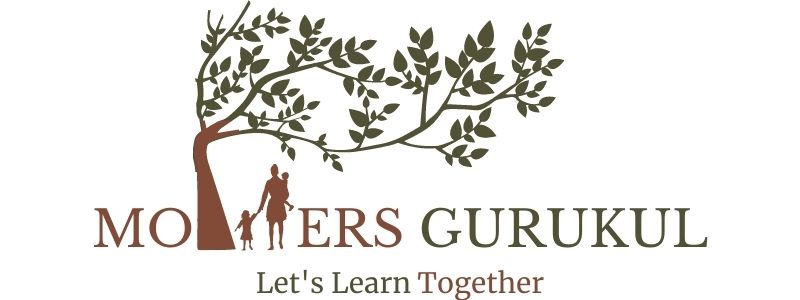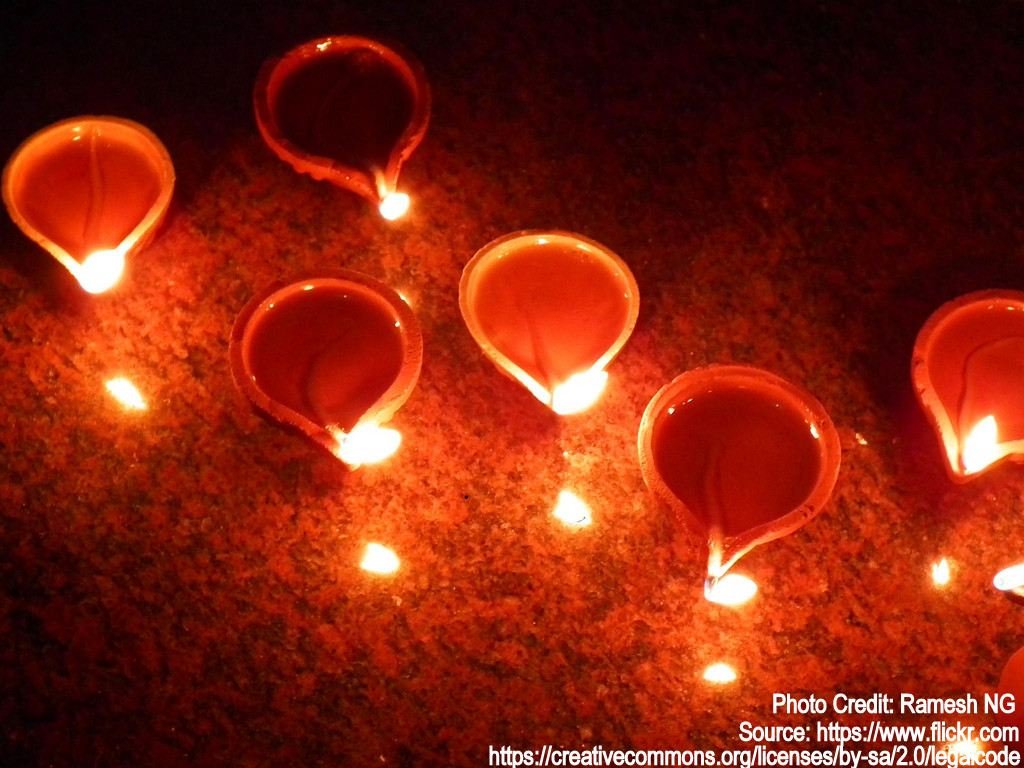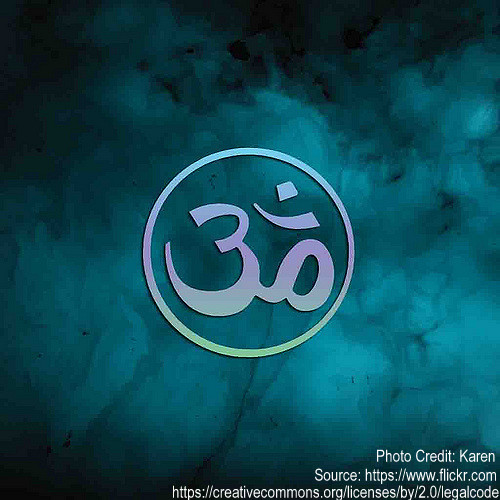Hello Everyone, I hope you had a good time celebrating Dussehra with your family and friends. Now, its time for another fun festival. It is one of my favorite festivals – Diwali-the festival of lights. If we combine Indian festivals with the one celebrated outside India, then we will see its lot of fun that goes around during the second half of the year. Dussehra, Halloween, Diwali, Thanksgiving, Christmas. What a fun? I already told you a Diwali story. There are few other things associated to Diwali pooja and that is what we will be talking about.
Goddess Lakshmi is worshiped on Diwali with Lord Ganesh. We have already talked about Lord Ganesh in detail. Other than this, symbols like Shri, Om, Swastika have their own significance in the pooja. So, lets talk about it in detail starting with Goddess Lakshmi.
Draped in a red saree, decorated with gold ornaments, seated on a lotus, pot in hand, flanked by white elephants, the image of Lakshmi adorns most of the homes in Indian families and business establishments. The word ‘Lakshmi’ is derived from the Sanskrit word “Laksya”, meaning ‘aim’ or ‘goal’, and she is the goddess of wealth and prosperity, both material and spiritual. Lakshmi is depicted as a beautiful woman of golden complexion, with four hands, sitting or standing on a full-bloomed lotus and holding a lotus bud, which stands for beauty, purity and fertility. Her four hands represent the four ends of human life: “dharma” (righteousness), “kama’” (desires), “artha”(wealth), and “moksha”(liberation) from the cycle of birth and death.
Cascades of gold coins are seen flowing from the hands, suggesting that those who worship her gain wealth. She always wears gold embroidered red clothes. Red symbolizes activity and the golden lining indicates prosperity. The right side of the body symbolizes activity; a lotus in the back right hand conveys the idea that one must perform all duties in the world in accordance with dharma. This leads to moksha (liberation), which is symbolized by a lotus in the back left hand of Lakshmi.
Lakshmi is the active energy of Vishnu, and also appears as Lakshmi-Narayan – Lakshmi accompanying Vishnu.
Two elephants are often shown standing next to the goddess and spraying water. This denotes that with ceaseless effort when combined with dharma and governed by wisdom and purity, it leads to both material and spiritual prosperity. The Lakshmi with elephants is called Gaja Lakshmi.
As a female counterpart of Lord Vishnu, Mata Lakshmi is also called ‘Shri’, the female energy of the Supreme Being.
Shri is the sacred name of Lakshmi. Shri is written on top of most documents. The word evokes grace, abundance, auspiciousness and authority. When the word is spoken or written an atmosphere of holiness is established. Whatever follows is infused with divine blessing.
Just as the word Shri is associated with the material side of existence “Om” is associated with the spiritual side of life. It is a sacred sound and a spiritual icon in Indian religions. Om or Aum is of paramount importance in Hinduism. The syllable Om is first mentioned in the Upanishads, the mystical texts associated with the Vedanta philosophy. It has variously been associated with concepts of “cosmic sound” or “mystical syllable” or “affirmation to something divine”, or as symbolism for abstract spiritual concepts in the Upanishads. It is made up of three Sanskrit letters, aa, au and ma which, when combined together, make the sound Aum or Om. It is believed to be the basic sound of the world and to contain all other sounds. It is a mantra or prayer in itself.
The swastika is an ancient symbol that has been found worldwide, but it is especially common in India. Its name comes the Sanskrit word svasti (sv = well; asti = is), meaning good fortune, luck and well-being.
So, this is all about the symbols related to Diwali. I hope you enjoyed knowing the details about the symbols and idols of diwali pooja. I tried my best to give you the details. few of them I knew and few I also learnt from different sources while drafting the post. I wish you all good luck, prosperity and good fortune.
Happy Diwali is advance!!
Audio link:
Sources:
https://en.wikipedia.org/wiki/Lakshmi
http://hinduism.about.com/od/hindugoddesses/p/lakshmi.htm
http://www.lotussculpture.com/lakshmi1.html



